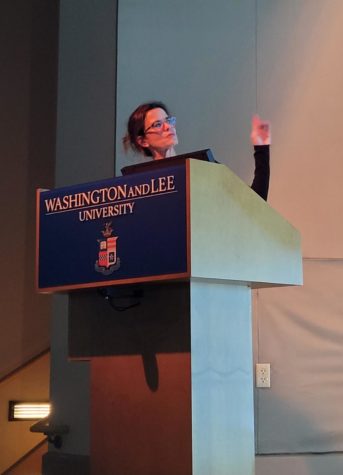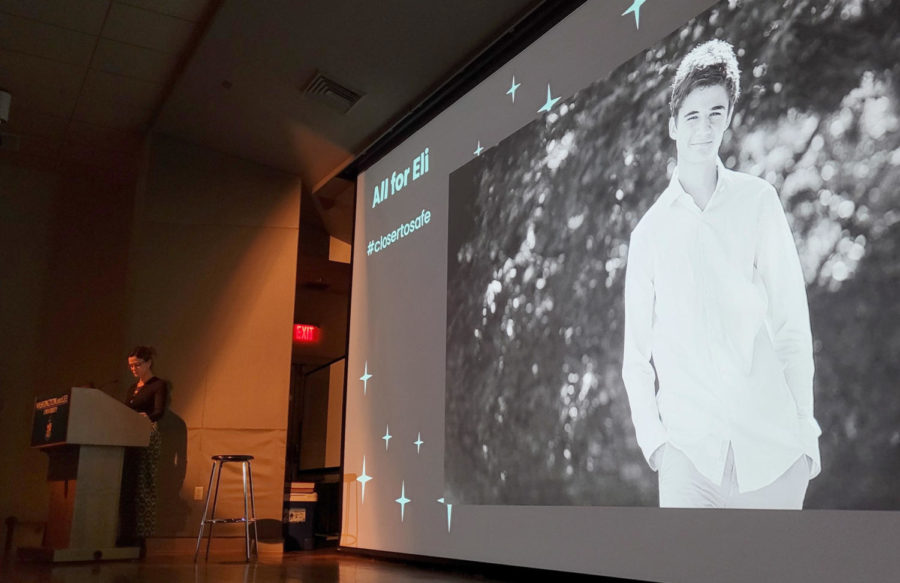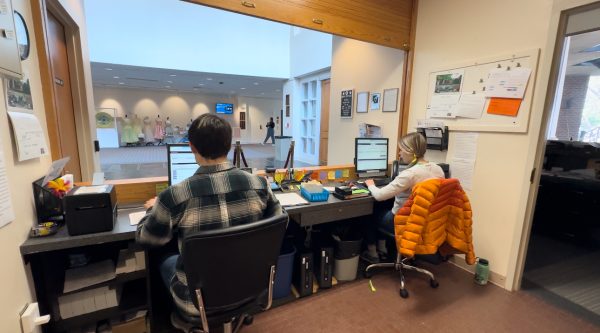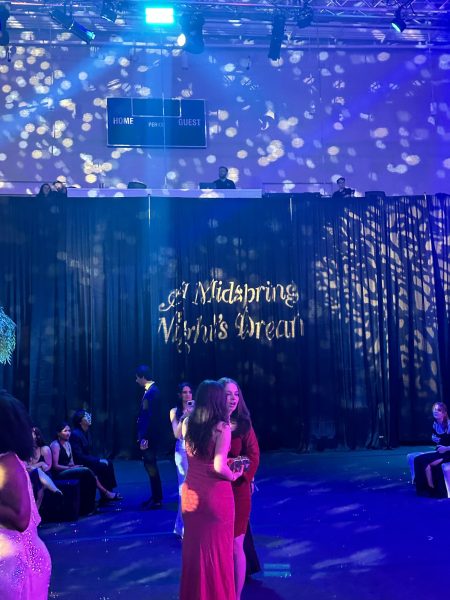BirdieLight educates students on dangers of fentanyl
W&L organizations worked together to bring Dr. Beth Weinstock to campus
Eli Weinstock’s tragic death spurred his mother to educate students on the dangers of fentanyl.
January 23, 2023
Eli Weinstock was a sophomore at American University when he died in March 2021 after unintentionally ingesting fentanyl.
Now, less than two years later, Eli’s mother, Dr. Beth Weinstock, is sharing his story across the country and educating young adults on strategies that can be used to avoid the dangers of fentanyl.
Weinstock spoke at Washington and Lee on Jan. 19 about her program, called BirdieLight. The Contact Committee, Kappa Alpha Theta sorority, the Washingtonian Society and W&L’s Office of Health Promotion worked together to coordinate the event.
“We are here tonight because something horrible has happened,” Weinstock said. “Something horrible happened to my family. And it’s happening to countless other families across this country every single day.”
Weinstock said that fentanyl, a drug in the opioid family, is the number one cause of death in 18-45 year olds today. In the past year, there have been over 108,000 drug-related fatalities in the United States. About 75% of those deaths involved fentanyl.
Weinstock said that means over 200 Americans die every day from the drug.
“You guys are swimming in poisoned waters,” Weinstock said. “I would argue this is the greatest public health crisis of your generation. We don’t lose this many young people to COVID, to cancer, to car accidents.”
Why is fentanyl so dangerous?
Weinstock, a primary care physician from Ohio, said that fentanyl, like other opioids, is used in the medical field as a pain controller. But unlike other opioids that are made from the poppy plant, fentanyl is a synthetic drug that is produced in labs. That means suppliers in the illegal drug market can easily make fentanyl and slip it into pills and powders.
“Because you can make fentanyl in a chemical lab with a few simple ingredients, there’s a lot of amateur chemists out there that have no idea what they’re doing,” Weinstock said. “They might not even know that they’ve got a lethal dose of fentanyl in a pill. They’re just throwing it together so they can make a buck.”
Weinstock said that fentanyl can be found in counterfeit oxycodone, xanax and adderall pills. She warned that illegal pills can look like real pharmaceutical drugs, laced with undetectable fillers like fentanyl. Fentanyl can also be found as a filler in heroine, cocaine, methamphetamine and ecstasy.
When ingested, fentanyl causes a feeling of euphoria similar to other opioids. But in lethal doses, fentanyl can cause unconsciousness, inability to breathe and ultimately death.
Weinstock said she doesn’t want to see any more young adults lose their lives this way.
“As a physician, as a grieving mom, as a mom in general, I would say just don’t take anything in this day and age,” she said. “ It’s just not worth it.”
How to stay safe and help others

But Weinstock is aware that she can’t stop young adults from trying drugs. She feels that the best way she can make a difference is by educating students on how to stay safe in situations where drugs are being used.
She encouraged students to use fentanyl test strips on any pill or powder. Once a small amount of the substance is dissolved in water, the test strip will indicate if there is any fentanyl present. Weinstock handed test strips out to students who attended the presentation. She also distributes them for free on the BirdieLight website.
Weinstock also told students how to help someone who is experiencing a fentanyl overdose. If someone is unconscious and not breathing in a situation where drugs are being used, Weinstock said to call 911 immediately and perform CPR.
If naloxone, an opioid reversal agent, is available, Weinstock said students should give it to the person in need. Naloxone is a nasal spray that kicks fentanyl off of brain receptors, so it will help those that are overdosing from fentanyl and have no effect on those who have no fentanyl in their body.
Bringing BirdieLight to W&L
Jan Kaufman, Director of Health Promotion, said that she has been working with the Virginia Department of Health to make naloxone more accessible on campus. People must be certified through Virginia’s “REVIVE!” training program to carry and administer naloxone. Kaufman organized one training in January and plans to host another in March.
Students and faculty members that attended the training in January received a free box of naloxone as well as a certificate that allows them to get free naloxone from the local health department. Kaufman hopes to make this process more accessible in the future.
Stefanie Lehman, ’25, has wanted to bring the BirdieLight program to campus since she first arrived. She went to the same high school as Weinstock’s son, and her brother was one of his close friends. Lehman is inspired by Weinstock’s talent to spread awareness.
“With everything she’s been through, she really just shines,” Lehman said. “I’m grateful to know her and grateful to have her on campus.”
To set her idea in motion, Lehman asked the Contact Committee for funding and reached out to other student organizations to serve as co-sponsors. Contact Committee President Anna Bosking, ’24, said that she was excited to see so many students come together to make the event possible.
“It really is a cross-campus effort,” Bosking said. “This isn’t something Contact [Committee] usually does, but this is such a unique circumstance given how important this topic is.”
Weinstock stressed three main tips: First, test every drug with a fentanyl test strip before using it. Second, never take drugs alone, and make sure there are multiple “designated drivers” for emergencies. Third, keep naloxone easily accessible.
Bosking was thankful that Weinstock had the platform to share those messages with students.“This presentation can save lives,” she said.
Weinstock said she knows that her son’s story can do just that because it makes the dangers of fentanyl apparent to young adults.
“This is not an ‘out there’ problem anymore,” Weinstock said. “This is an American problem. It’s our problem. And you guys are the ones that need to solve it.”













